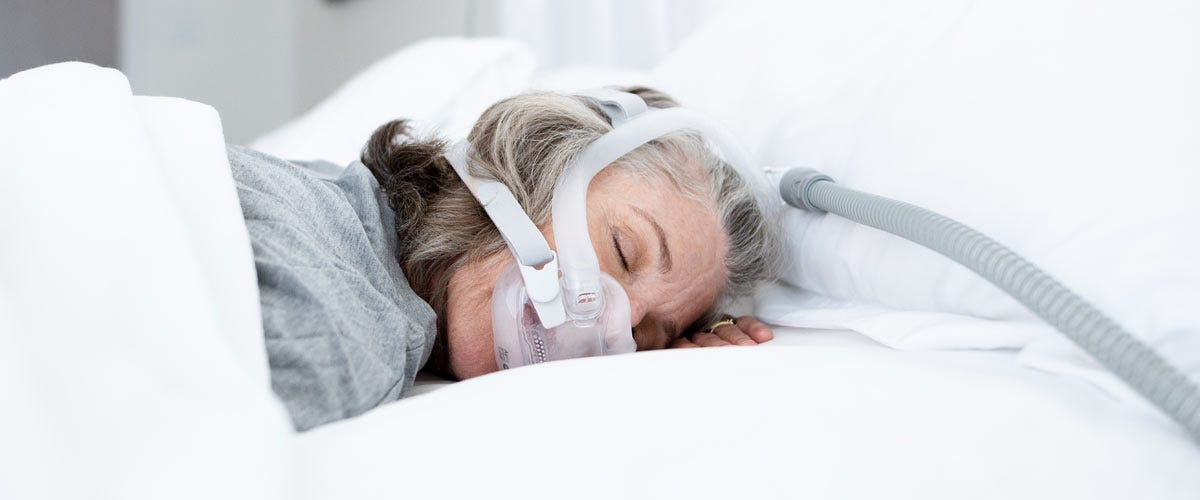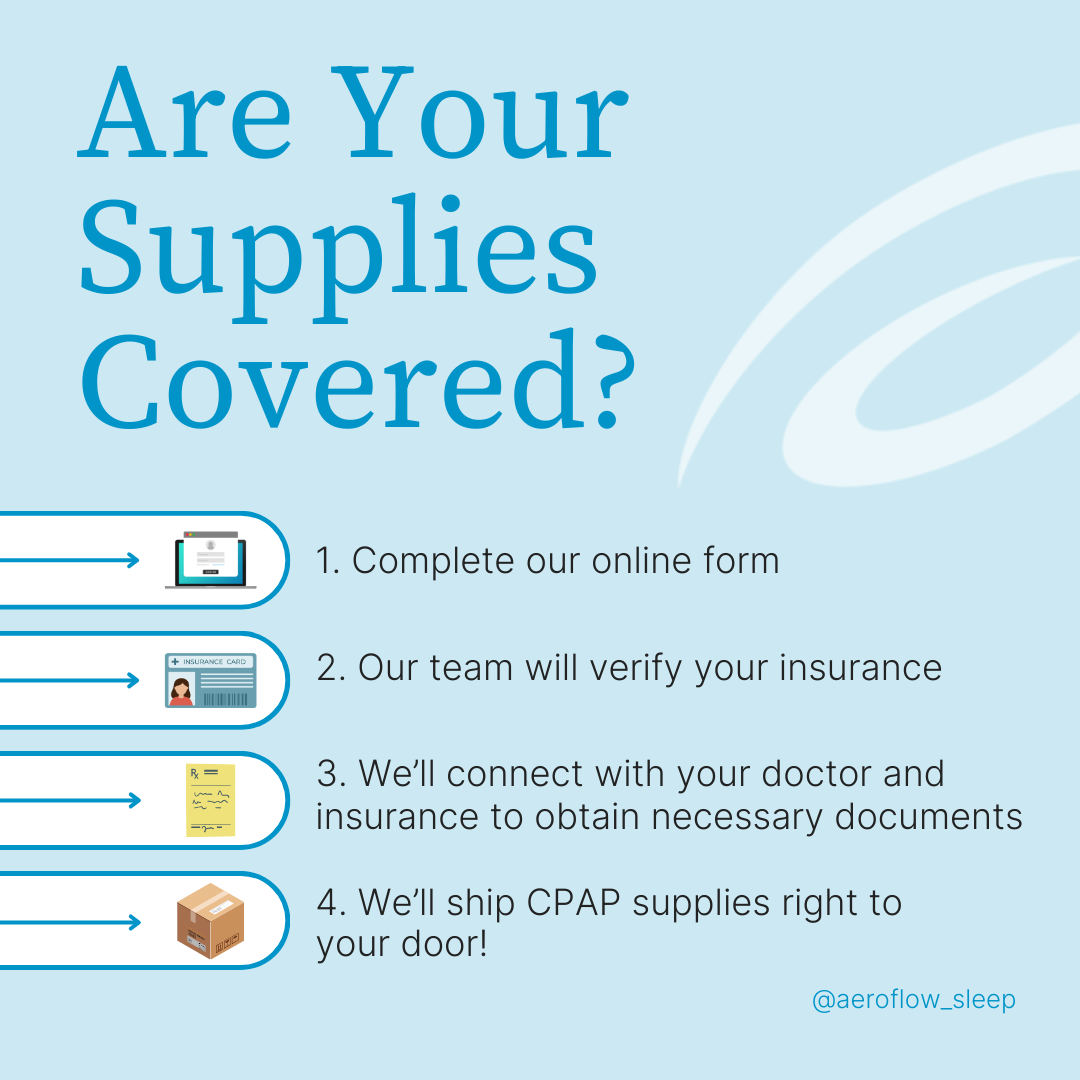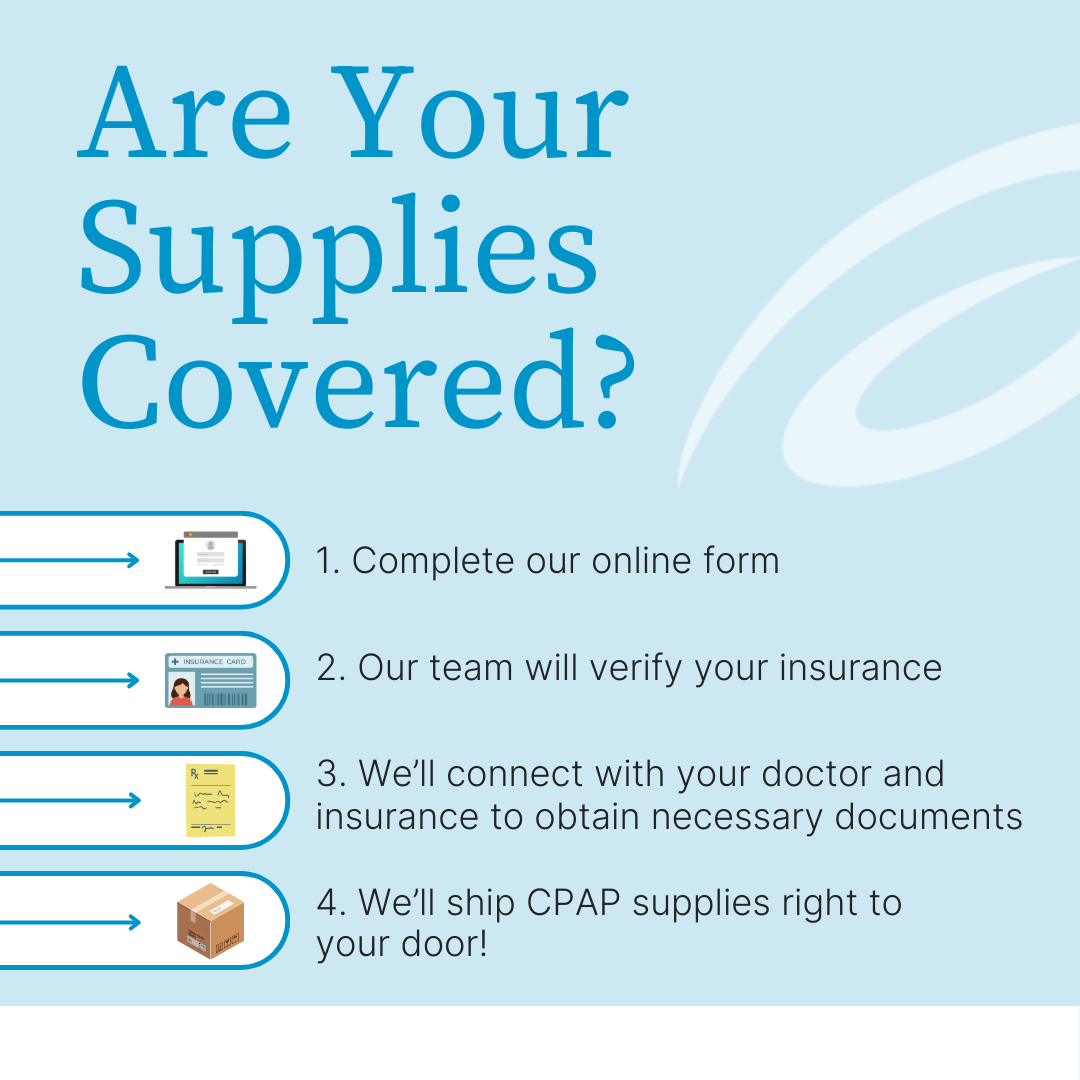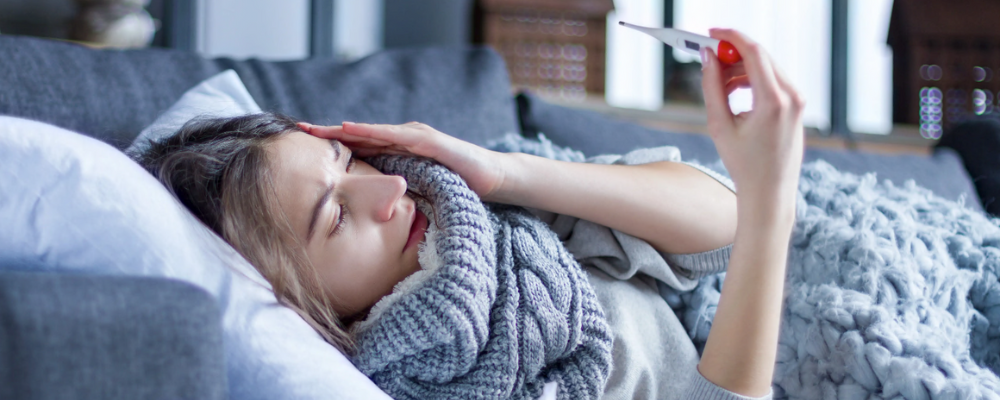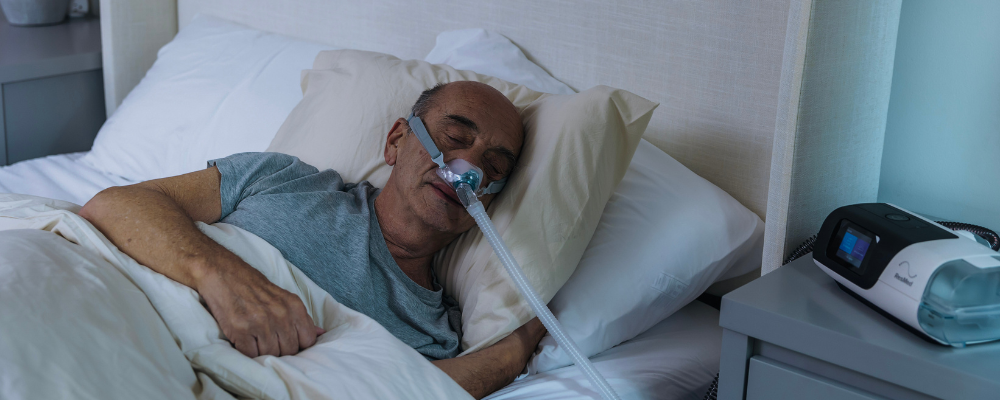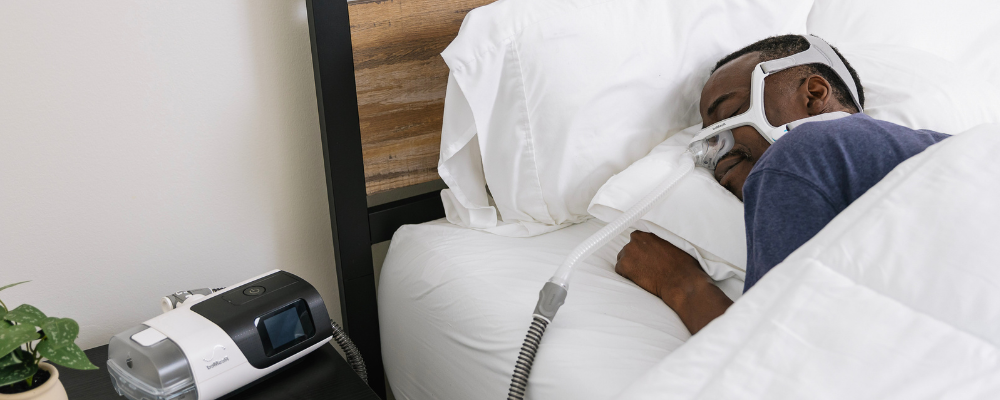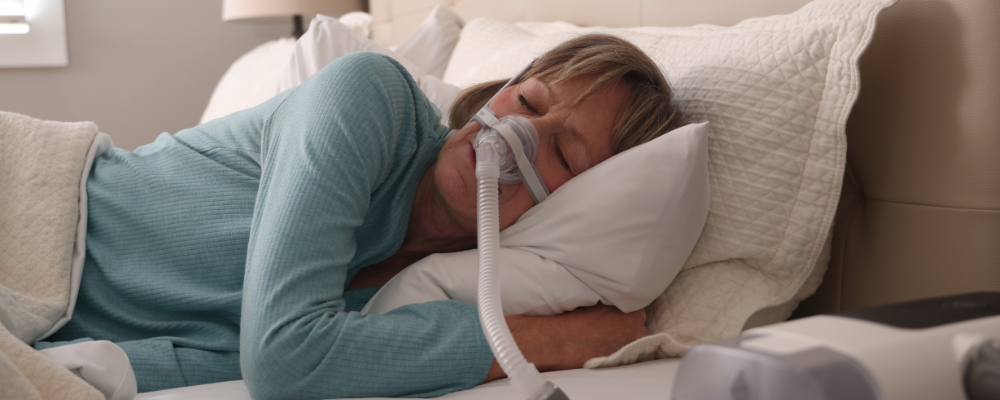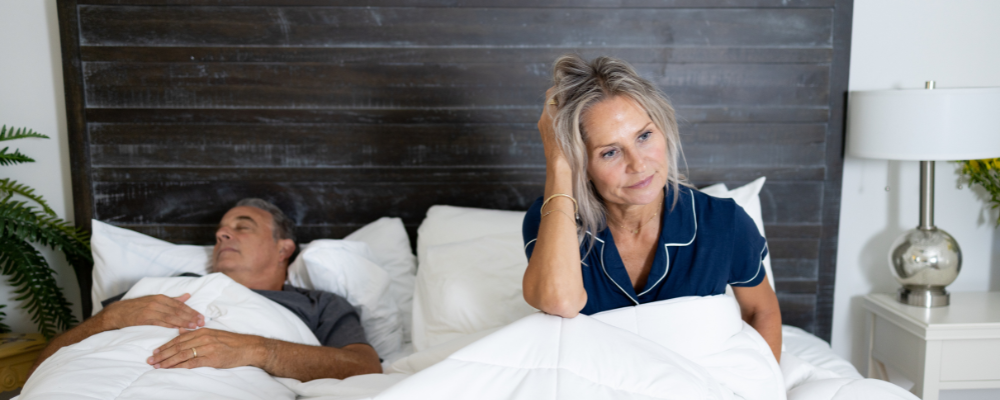Your doctor has prescribed CPAP therapy for your sleep apnea, but you can’t stand it. You toss and turn, trying to get comfortable. Meanwhile, air keeps blowing in your face, and you rip off the mask before you feel you’ve gotten any relief or, for that matter, sleep.
This is a common scene for many new CPAP users. So, here are nine easy tips to help you fall asleep fast with CPAP therapy, bringing you the extra mile to an improved quality of life.
Why Getting Used To CPAP Is Important
Let’s be clear; we understand meeting compliance can be the hardest part of CPAP therapy. Compliance is the period in which your health insurance provider requires you to use your PAP device—be it an APAP, BiPAP, or CPAP machine—a specified amount of time before they will agree to cover the cost. Typically, this means using your CPAP at least 4 hours per night for 30 consecutive days of a total 90 days. Studies have shown doing so increases your chance of getting used to CPAP within the first month by 58%.
Wear your CPAP mask around the house for 15-30 minutes each day to get used to it. Also, always wear it during naps and bring the whole setup on vacation; it’s travel-friendly and safe to use on a plane (without needing a travel CPAP!) This process is known as CPAP desensitization and can help you gradually increase the amount of sleep you get while wearing your CPAP.
Of course, getting used to sleep apnea treatment isn’t only necessary for insurance purposes though. It’s important for your overall health as well. If you have additional health concerns, a good night’s sleep will affect them all. For example, there are comorbidities that can be exacerbated by poor sleep; including cardiovascular diseases and diabetes. There are also many mental health disorders triggered by sleep apnea symptoms; including anxiety, depression, and PTSD. You should see signs of improvement across the board with regular CPAP use.
The bottom line is this: don’t get discouraged. Using your new PAP device will get easier. Your sleep apnea treatment is unique, so adapting is too. From your pressure setting to your mask type, getting used to CPAP is different for everyone; even how old you are and where you live may impact your adjustment period. Be patient as you transition to using your CPAP device on a nightly basis, and remember, the benefits will be worth it.
If you are struggling to meet CPAP compliance or do not notice any changes in your overall health, please contact your doctor and Aeroflow Sleep Specialist.
How To Make Your CPAP Therapy More Comfortable
The first four tips we have to share with you address how to make your CPAP therapy more comfortable, as this is the most likely reason you’re not falling asleep right away.
1. Adjust Your CPAP Mask Straps
A proper fit is the first thing you’ll want to check for comfort. You should be able to fit two fingers beneath your CPAP mask straps. Any more, and your straps need to be tightened. Any less, and your straps need to be loosened. You can do either a few different ways, depending on your CPAP model.
Some CPAP masks have velcro on the sides that you can easily pull back yourself. Others have magnetic clips or mimic a harness. These are a little more challenging but can still be adjusted at home. The masks you want to watch out for are those that are not adjustable. In that case, you’ll want to try Aeroflow Sleep’s mask-fitting technology. Call 1-800-480-5491 for details.
2. Clean Your CPAP Parts Regularly
Because your CPAP mask touches your skin and your breath passes through the components, things like dust, skin cells, allergens, bacteria, and more can collect in your CPAP parts. You will sleep better with fresh supplies, plus clean CPAP equipment lasts longer and may prevent you from getting sick.
Remember to replace the distilled water in your humidifier chamber every morning. Then, once a week, wash your CPAP supplies by hand, using warm soap and water. We recommend using Dawn or Ivory dish soap, but some patients like to use a natural solution of vinegar and water. Hang up to air dry, and do not use your CPAP machine again until all parts are completely dry again.
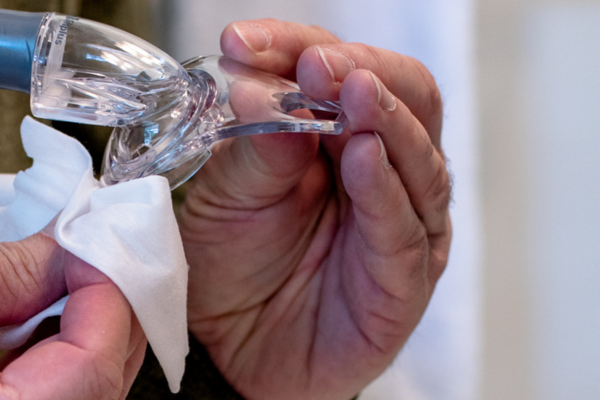

3. Invest In Heated CPAP Supplies
If the air passing through your CPAP is harsh or cold, consider using a CPAP with a heated humidifier to add warm moisture to the air. Pairing your CPAP with a heated hose can also help maintain this. Please note that most insurance plans consider heated CPAP supplies a luxury; not a medical necessity. Therefore, they are not often covered through insurance.
4. Take A Look At Your Pressure Settings
If your CPAP pressure settings are too strong, don’t try to change them yourself! Contact your doctor or Aeroflow Sleep Specialist. We can take a look at your pressure settings together and determine what the actual range needs to be, to get you a comfortable night’s rest.
Newly diagnosed with sleep apnea? Ask your doctor about getting a CPAP with an “Auto Ramp” feature. This will slowly ramp up the amount of pressure you receive over a period of time, until it reaches your prescribed settings and helps you fall asleep. Or, you can try an APAP machine, which does the same thing automatically.
How To Be Intentional About The Products You Choose
Like we said, changing your pressure settings should be a last resort, but even that’s a better option than changing your PAP device altogether. This is still an option though. Aeroflow Sleep offers a free mask-swap within the first 30 days of use, if you’re not completely satisfied.
Unfortunately, the same can’t be said of machines, tubing, humidifiers, even many of the individual CPAP mask parts; like cushions and headgear. That’s why our next few tips are all about how to choose each piece of your CPAP setup with intention.
5. Look At Product Guides & Reviews
Not all CPAP manufacturers are the same. Even each machine model within these brands incorporates different technology, different textures, and different colors. You may like one more than the other, so do your research ahead of time and consider what features are important to you. For example…
Some have incredibly quiet motors, so they won’t disturb you or your bed partner. CPAP noise levels are rated in decibels, so consider the dB rating of each. You’ll want to look for something within the range of 30 dB, which is about as loud as a whisper.
Others offer an expiratory pressure relief (EPR) or FLEX feature. One of the most common complaints of first-time CPAP users is exhaling against the pressure of the machine. These features allow the machine to lower its pressure setting automatically when you exhale, making breathing with the CPAP easier to tolerate.
Aeroflow Sleep has taken the time to review the products we offer, so you don’t have to! If you’re curious about any of the specifics, check out our selection of favorites on the blog:
6. Research Your CPAP Mask Options
There are three main styles of CPAP masks; full-face, nasal, and nasal pillows. Which one you need is not just a matter of preference. Your unique sleep apnea symptoms can be a guiding light when making a decision as well. Ask yourself…
Am I a mouth breather? A full-face mask is the best option for mouth breathers, because it covers both your nose and mouth, allowing the air pressure to fully enter your airways whether your mouth is open or closed.
Am I claustrophobic? You may want to look at a CPAP mask with minimal contact and a clear field of view if too much mask makes you uncomfortable. Try a nasal or nasal pillows mask.
Do I read or watch TV before bed? Another reason to try a nasal or nasal pillows mask is if your bedtime routine involves reading or watching TV. Some CPAP masks are designed to fit glasses over them, so you can unwind and fall asleep at your own pace.
Are my pressure settings high? If you need a strong pressure setting (more than 15cmH2O,) use a BiPAP machine, or enjoy an auto ramp feature, you should consider nasal pillows. These little cushions insert into your nostrils for a tight seal.
7. Don't Forget CPAP Accessories
Tubing and humidifiers come standard with your machine, but CPAP accessories you pay for out-of-pocket—CPAP mask liners and chin straps—can also make your entire setup more comfortable. Plus, you may want to invest in CPAP wipes or sanitizing units for on-the-go cleaning solutions. Or, special skin creams to soothe the nose sores that may develop while you get used to wearing a mask.
How To Optimize Yourself & Your Surroundings For Great Sleep
Optimizing yourself and your surroundings for great sleep seems like a no-brainer, but it’s an afterthought for most sleep apnea patients. You become so focused on the diagnosis and CPAP that you forget the basics that can set you up for success. To wrap up our list, let’s revisit two easy tips everyone can benefit from.
8. Optimize Your Bedroom For Comfort
The most comfortable bedroom is one that’s dark, cool, luxurious, and without distractions.
To keep the bedroom dark, make sure all sources of light can either be covered or turned off and on. Opt for blackout curtains or shutters over window blinds, as the latter can still filter through outside light. On the inside, reduce the amount of light to a single lamp rather than overheads and keep said lamp within arms’ reach for when you go to bed. Finally, if you do need a light source for safety purposes, install dimmer switches, clappers, or ambient night lights.
To keep the bedroom cool, set your thermostat to “Auto.” Newer thermostats will automatically cool down a room if it reaches your preferred, set temperature, so you’ll never have to worry about keeping the bedroom cool enough to sleep well. If your thermostat is older, use a fan to draw in cool air. Or, you can try any number of tips from our blog.
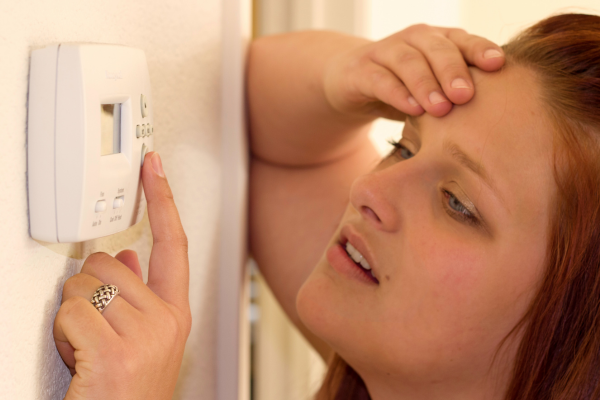

To achieve luxury in the bedroom, clean it first! A clutter-free bedroom is the simplest way to add a little luxury and calm to your space. Then, spend the money you save ordering CPAP supplies from Aeroflow Sleep on soft bedding, supportive pillows, and a high-end mattress. You can even try an interior design makeover, selecting new paint colors for the walls; like pale blues, light greens, or off-whites.
And, to be “without distractions,” ensure a bed partner is the only possible distraction. What do we mean by that? Leave the pet(s) in their crates, the kid(s) in their rooms, and any electronics out of reach; not in your bed. This will lower your chance of being awoken by anything outside of REM sleep…unless your bed partner snores, then you might want to have them checked out for sleep apnea too.
9. Optimize Your Lifestyle For Sleep
Snoring is actually an indicator of needing to make a few daily adjustments to your lifestyle, and these changes will make it easier to get to sleep at night. For example, you can:
- Avoid caffeine within 4 hours of bedtime
- Avoid alcoholic beverages 2-3 hours before bed
- Avoid eating 2 hours before bedtime to prevent heartburn
- Exercise 30 minutes daily but do it at least 3 hours before bedtime
- Practice mindfulness; perform quiet, healthy tasks to help you relax
Don’t forget; snoring is still the leading symptom of obstructive sleep apnea (OSA.) Talk to your doctor if your snoring doesn’t subside with nightly CPAP use and lifestyle changes.
How Aeroflow Sleep Can Bring You The Extra Mile
Practice makes perfect! With a few nights under your belt, wearing your CPAP mask and using a CPAP machine will get easier. You’ll develop a perfect technique in no time and be confident that you’re adhering to your sleep apnea treatment. If you’re not, give us a call. Aeroflow Sleep employs a caring, dedicated team of Sleep Specialists who can help you on your sleep apnea journey.
Plus, if you haven’t actually tried CPAP yet and recently received a diagnosis, we can get your new CPAP setup covered up to 100% through insurance. We accept most private, secondary, Medicare, and Medicaid insurance plans. All you have to do to find out if you’re in-network with us is take 5-7 minutes to fill out our online qualification form and Sleep Apnea Profile below. Our representatives are standing by to check your eligibility (and get you back to sleep.)
References
Budhiraja R, Parthasarathy S, Drake CL, Roth T, Sharief I, Budhiraja P, Saunders V, Hudgel DW. Early CPAP use identifies subsequent adherence to CPAP therapy. Sleep. 2007 Mar;30(3):320-4. PMID: 17425228.
P, J. “61 Interesting Facts You Never Knew about Sleep (2024).” Insider Living, MattressInsider.com, 20 May 2020, www.mattressinsider.com/blog/sleep-habits/.


